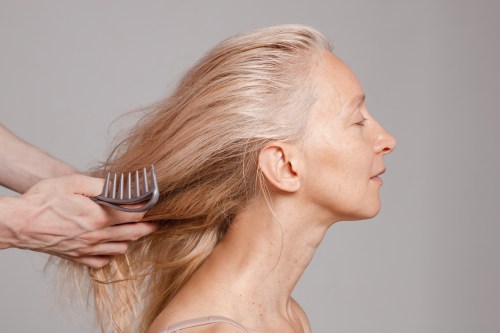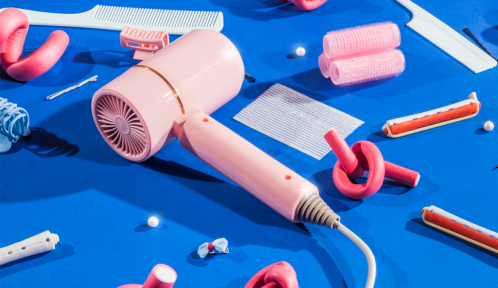5 tips every woman needs to know before shaving her face
There's a ton of buzz about celeb facialists and bloggers who say they're into this practice; 5 face-shaving tips.


Last month a New York Times article revealed that celebrity facialist Kate Somerville and many of her female A-list clients (names noticeably withheld) shave their faces.
A reality star, soccer mom, and blogger also fessed up to the deed. Their reasons? It not only removes the hair (peach fuzz and dark strands alike), but it does a bang up job of exfoliating. Talk about a perfect recipe for an ultra-smooth face.
But wait a second. “Shaving” is not ever paired with “face” in the Unspoken But Seemingly Mandatory Body Hair Removal Manual for Women, where waxing, bleaching, lasering are all recommended as a course of action. Cue panic/confusion/genuine curiosity.
While these buzzy (or should we say fuzzy?) beauty admissions piqued the interest of thousands of women quietly noticing chin hairs in the bathroom mirror, they also raised a ton of questions. Like how to remove unwanted facial hair with a razor—could it be just as easy as the guys make it look? Or would it make matters worse?
So we went to the experts—a hair removal technician, a dermatologist, a plastic surgeon, and a facialist—and learned that before you take a razor to your pretty face, there are some things you really ought to consider. —Amy Marturana
Here are the five things you need to know before shaving your face:
1. It’s a myth that it will grow back darker and coarser. “Shaving has absolutely no effect on the rate of regrowth, the color, or the thickness of the hair. Although it may feel a little stubbly, the hair is not actually thicker at all,” explains Elizabeth Tanzi, MD, dermatologist and co-director of the Washington Institute of Dermatologic Laser Surgery in Washington, DC. So then, why have we been taught since puberty that this is the case?
Stephanie Kaulesar, an expert technician at hair removal salon Spruce & Bond clarifies: “What you are feeling is the blunt shaved edge of the hair instead of a thin pointed end that’s the natural shape of a hair strand.” Other than chemical processes, like when you get your hair colored or a perm, nothing can change the specific hair texture you’re born with (other than sneaky hormones).
More reading:9 beauty tools insiders can’t live without
2. Try a men’s razor. They’re developed specifically for the face. “My favorite is the Schick Hydro 5,” says Kaulesar. “A man’s razor is designed to tackle tougher hair, they’re extremely sharp, and more durable.” Which means you’ll decrease your chances of causing irritation and ingrown hairs. Just make sure to shave in the same direction as hair growth, and limit the number of passes. Go slowly and carefully and don’t use a dull razor.
More reading:Two natural hair removal methods you need to try now
3. Never use the same razor you use on your legs. Keeping things—specifically bacteria and dead skin—separate is a good way to avoid irritation and potential infection, suggests Cecilia Wong, facialist and founder of Cecilia Wong Skincare. “If you use the same razor you use on your body, you put yourself at risk of nicks and cuts, which can cause inflammation and irritation and can lead to scarring and ingrown hairs,” she warns.
4. You’ll be more prone to ingrowns. Yes, shaving your face can have skin-smoothing benefits. But the friction and micro-damage it imparts on the skin can cause pesky ingrown hairs. “Shaving in the same direction in which the hair grows helps prevent irritation,” says Kaulesar of Spruce & Bond. She recommends washing gently with a washcloth, or regularly using your Clarisonic to keep ingrowns at bay. Don’t use in-grown products meant for the bikini line for your face.
More reading:Recipe: A delicious dip that’s also good for your bikini line (not kidding)
5. Shaving at home is not the same as dermaplaning. Dermaplaning, which a lot of women are talking about right now, is an in-office procedure that’s more about exfoliation than shaving. It’s not something you should ever try at home, warns Dr. Daniel Maman, an NYC-based plastic surgeon and assistant clinical professor of plastic surgery at Mount Sinai Hospital. “Dermaplaning uses a specialized scalpel, held at a 45-degree angle to the face, to mechanically remove the superficial layer of dead skin cells,” he explains.
The goal is removing skin, not hair, though that’s often welcome side effect. In addition to trying to navigate facial contours with a very sharp object, “patients themselves will have difficulty judging exactly how deep and how extensive the shaving of superficial dead skin cells should be,” Dr. Maman adds. So leave that to the professionals.
Bottom line: If you’re looking for a simpler way to remove patches of facial hair without suffering through painful weekly upper lip waxes—with skin-smoothing benefits as a positive side effect—shaving your face might be worth a try. If the more intense skin-rejuvenating benefits of dermaplaning sounds more like your goal, see a plastic surgeon or derm who performs dermaplaning to see if the procedure is right for you.
Originally published on July 5, 2015. Updated on September 22, 2018.
If your beauty habits are starting to look more like your grandmothers, here’s why. Plus, this buzzy beauty trend is anything but retro.
Sign Up for Our Daily Newsletter
Get all the latest in wellness, trends, food, fitness, beauty, and more delivered right to your inbox.
Got it, you've been added to our email list.










